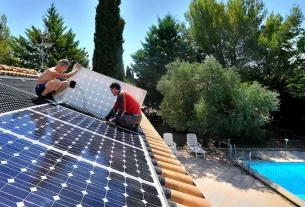There are two ways to check the chlorine level in your pool. One method uses test strips. These pads contain a liquid indicator that changes color when water touches them. A liquid test kit, on the other hand, uses a dropper bottle filled with the reagent. In either case, a small sample of water is required to determine the chlorine level. To use a test kit, the water sample must be at the elbow depth and away from jets.
A test strip will reveal the levels of alkalinity, free chlorine, pH, and calcium hardness in your pool water. These strips are quick and easy to use, and they take only 15 seconds to appear. They are also better than liquid tests since you do not have to add anything to the water. You can use the same test strips multiple times if you want to check your pool’s chemical levels more than once. If you’re unsure of the level of any one of these chemicals, you can contact a professional.
A 5-way test kit allows you to check the levels of five basic chemicals: chlorine, pH, acid demand, and total alkalinity. These tests are crucial for maintaining the water quality of a pool, so you can use these kits to determine the pH and sanitizer levels. These strips also have a clear-view test block with integrated color chip readouts. Chlorine and ph indicators are located on the front and back of the block. The test block comes with a complete set of indicator solutions, including 1 oz. solutions for #1, #2, and 5, and a half-oz. solution for #4.
One of the best ways to check the pH level of your pool is by adding baking soda to the water. You can find baking soda in grocery stores, and the instructions for using it in a pool will be on the package. Baking soda should be added in a pouring pattern, so that it doesn’t collect in the pool. Repeat the test at least six hours later. This will ensure that the water quality is within acceptable limits. Then, use a pool calculator to help you with other balancing agents.
Total alkalinity is a crucial component of swimming pool water. This level should range from 90 to 120 parts per million. It greatly affects the pH level of the water. While the ideal range is between ninety and 120 ppm, TA levels may fluctuate. Low TA levels can result in the pool being murky or burning the eyes. If you have low TA levels in your pool, you should treat the water to bring it up to the right level.
While testing the water chemistry is easy, a failure to check it frequently will result in damage to swimming pool materials and features. Additionally, the water may be unsafe for swimmers and can cause a variety of illnesses. Testing the water chemistry should be a regular part of your routine for a healthy backyard resort. It can also help you determine what needs to be done to maintain the water’s quality. There are many types of testing kits available to help you with your swimming pool water quality.




